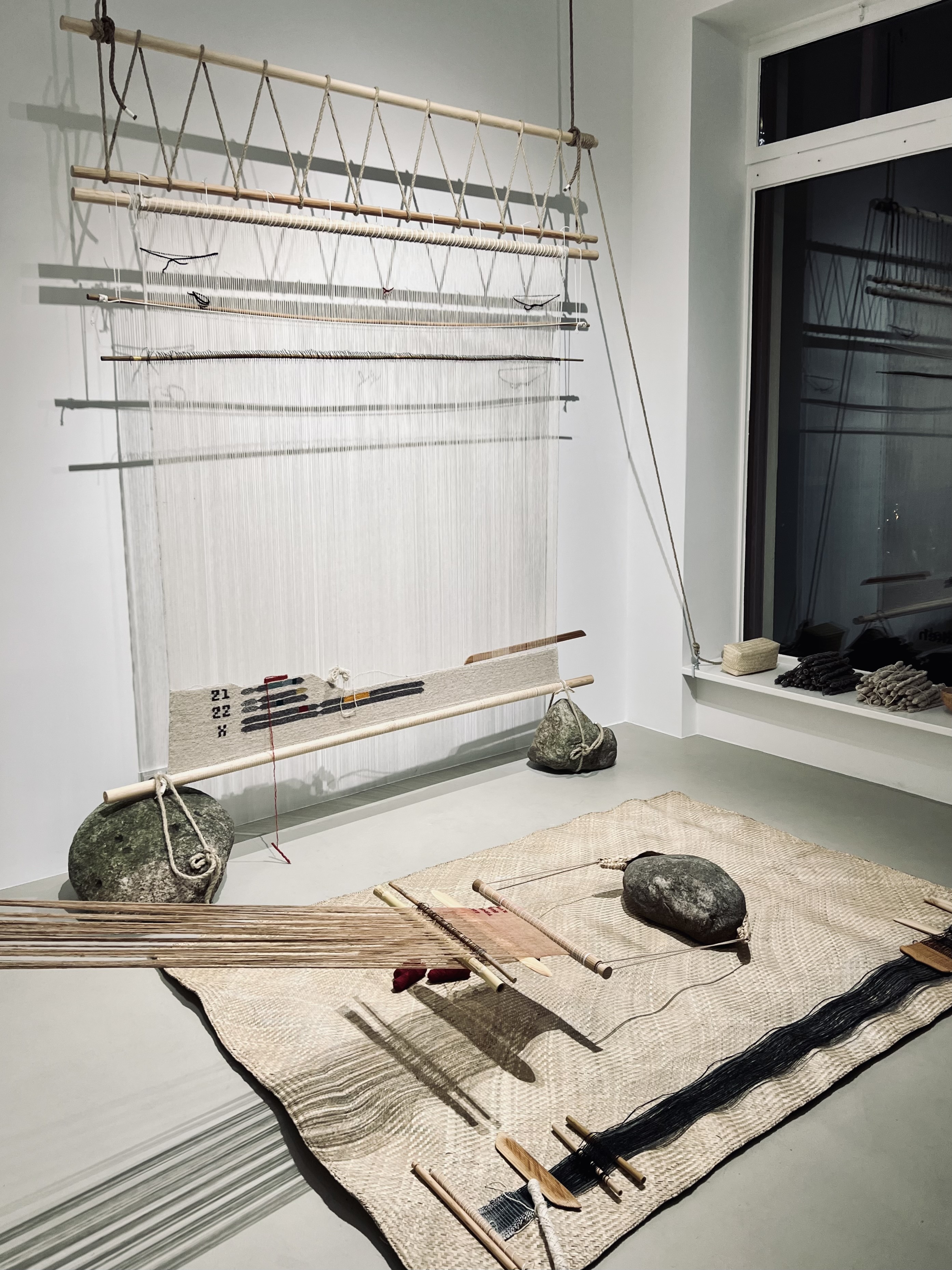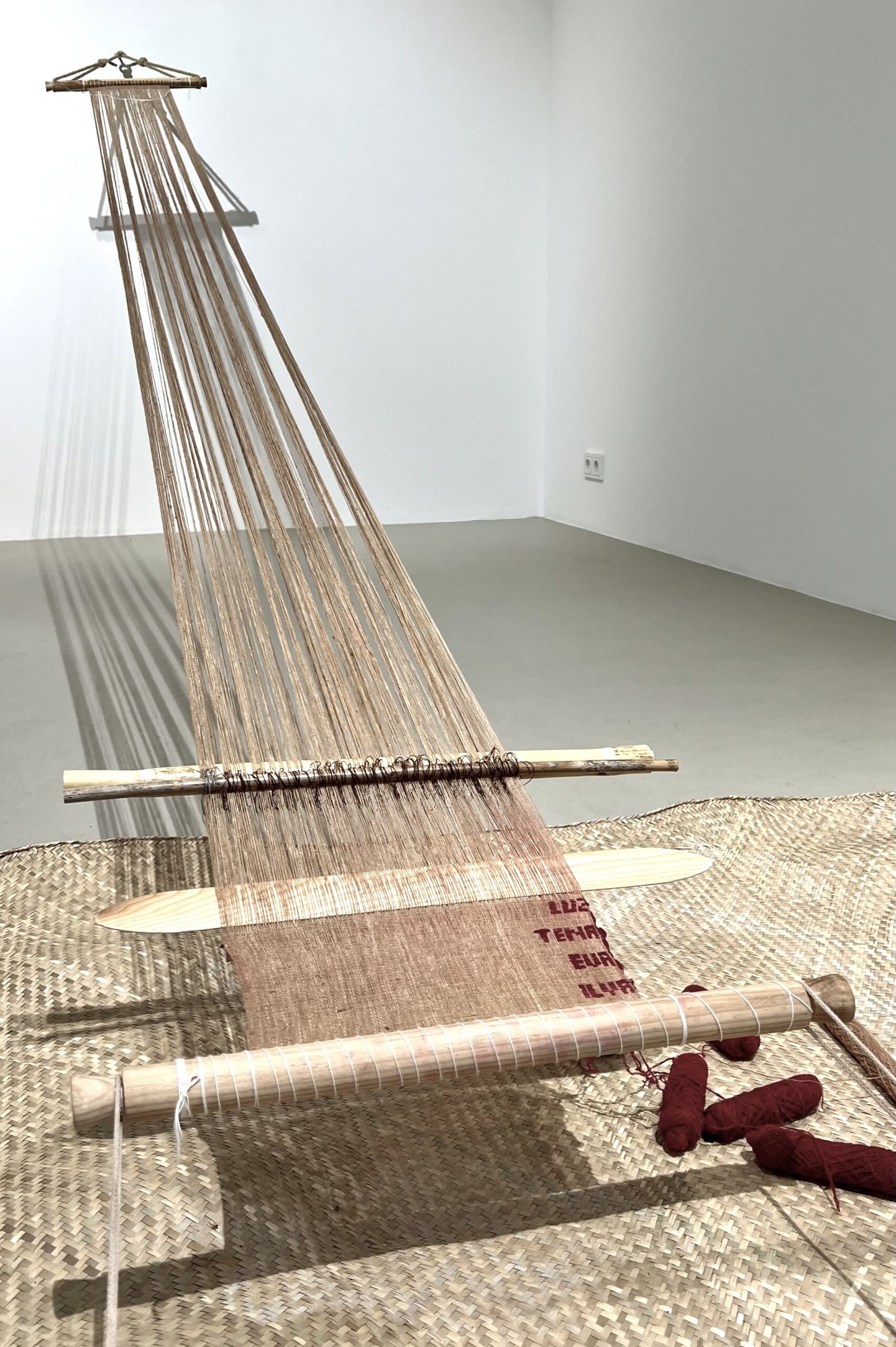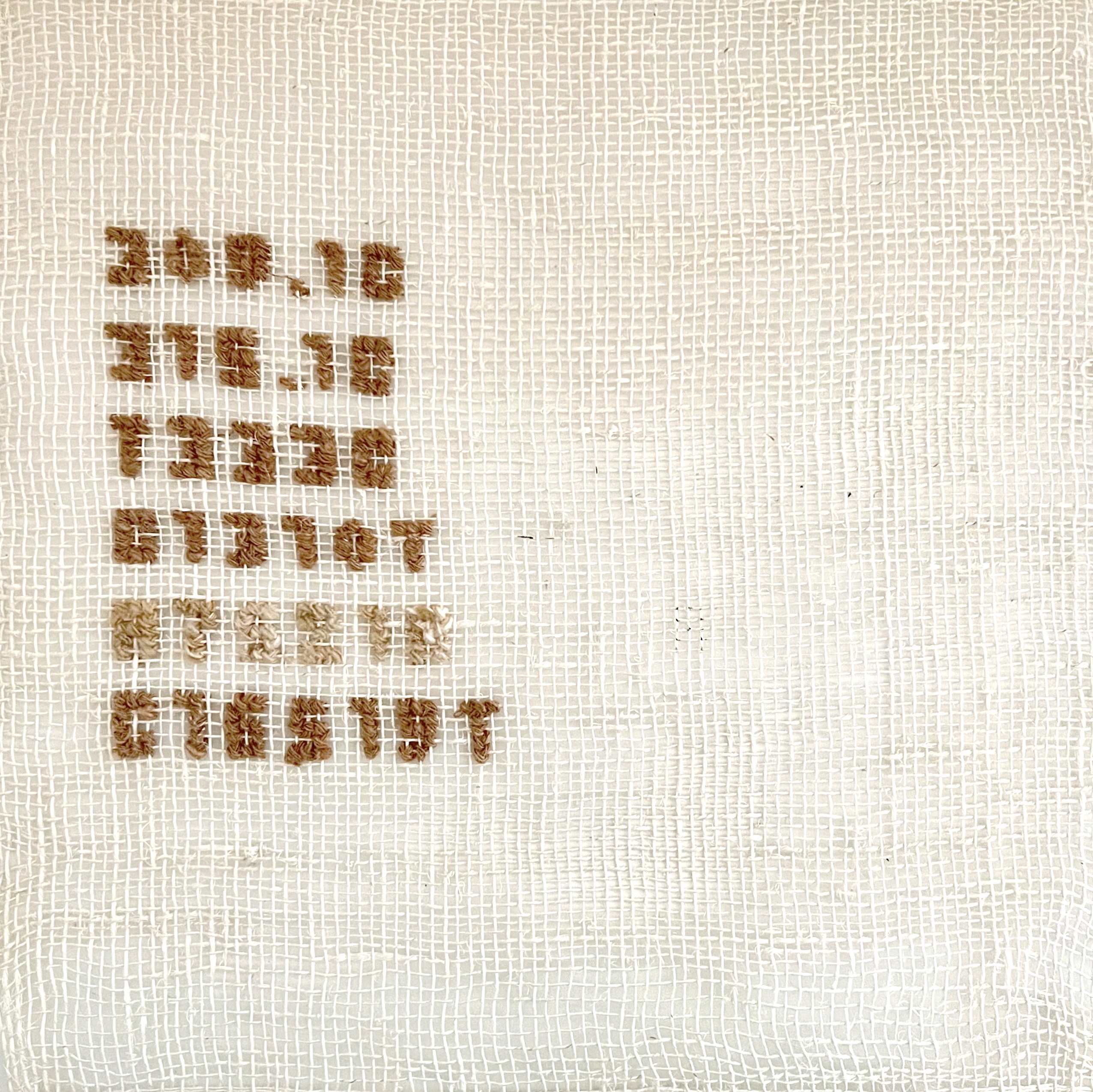Translating (geno)Type into Text(iles)
When my mother passed away during the pandemic and I was unable to fly back home to Mexico to grieve with my kin, I did a couple of things I swore I’d never do: I underwent DNA testing and began building a family tree. I also started weaving (and unweaving) on a small frame loom I’d found on the street, similar to the much larger ones I remember my mother warping and wefting when I was a child, and which I stubbornly refused to let her teach me to use.
As soon as I got my test results, I decided I needed to teach myself to weave in the style of my Amerindian ancestors and to embroider like my Sephardic ones, which I’ve been doing mostly with the help of books and online videos. I’ve also continued to search for my ancestors in the archives and have been exploring the (im)possibility of “recreating” my mom’s genome.

Genotapestry (Eva)
Using a method that combines statistics, computer science, genealogical research, and the data obtained from my and my brother’s DNA tests, I have started mapping my mother’s 23 chromosomes and trying to identify the specific (female) ancestors from whom she inherited each segment. Once I decided to translate all this into a body-sizes tapestry (i.e. my mom’s height by her arm span), the question turned to what type of techne to use. After a few ill-fated experiments, I’ve set up a Pueblo-style hanging vertical loom, the construction of which I based on antique photos, anthropologists’ descriptions, and contemporary Diné (Navajo) weaving practices. The piece will remain permanently in process, continuously unwoven and rewoven as I gather and process new genetic and genealogical data.
Hand-spun sheep’s wool*; cotton warp. Wood, rope, twine, paracord. Dimensions: ca 150 x 150cm (ca 200 x 200cm including loom components)

Matriline (C1b7a)
Woven on a traditional Mesoamerican backstrap loom, the documentation of the names in my motherline in the form of a traditional sash is also an unfinishable (and impossible) project that will be updated when or if I discover more records in the archives. Mitochondrial haplogroup C1b7a is native to the Americas, so the chance of finding anything pre-Conquest is almost non-existent.
Hand-spun Coyuchi cotton stabilized with corn meal and hand-spun white cotton dyed with cochineal (a.k.a. “cactus blood”) and a few drops of my blood.** Wood, rope, twine, nylon thread. 320 cm long x 32cm wide.
 x+ mutations (C1b7a)
x+ mutations (C1b7a)
I have no children, sisters, or cousins born to any of my mom’s sisters. There’s no record of anybody else with mitochondrial haplogroup C1b7a with these extra six mutations, so this piece could end up being the only surviving trace of my matriline.
Hand-spun Coyuchi cotton** on ixtle (agave fibers). ca. 30 x 30 cm

